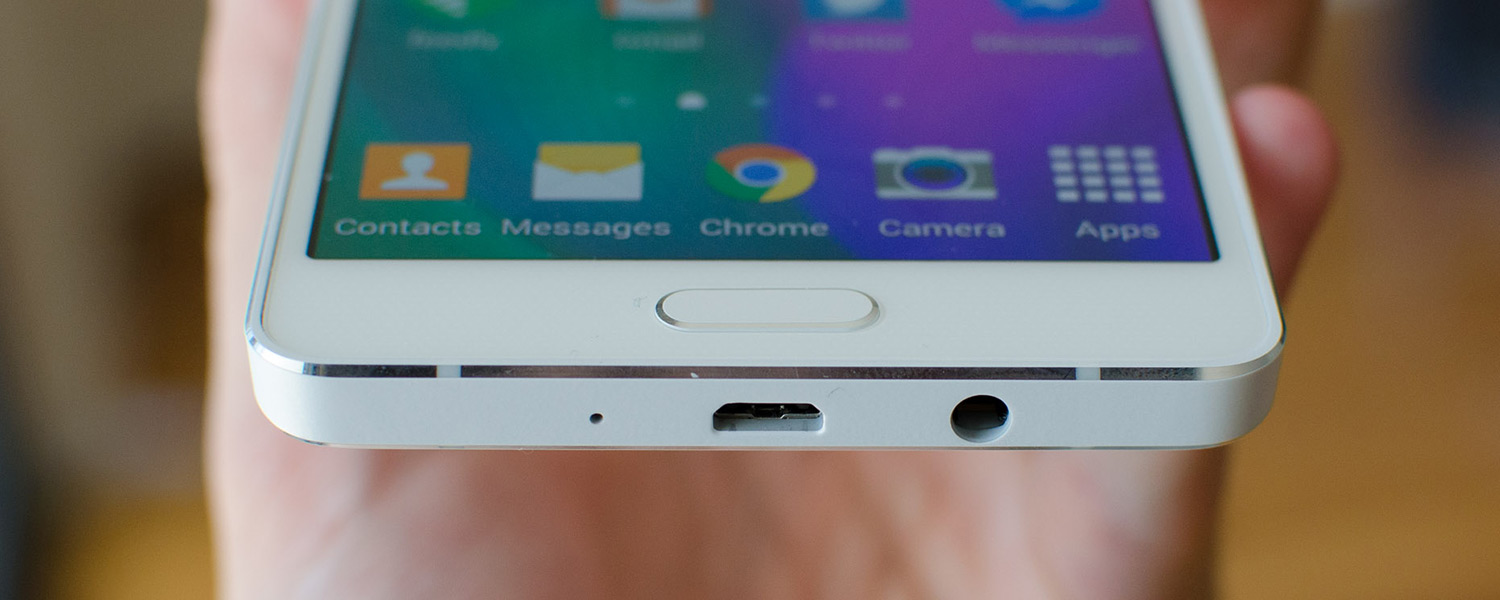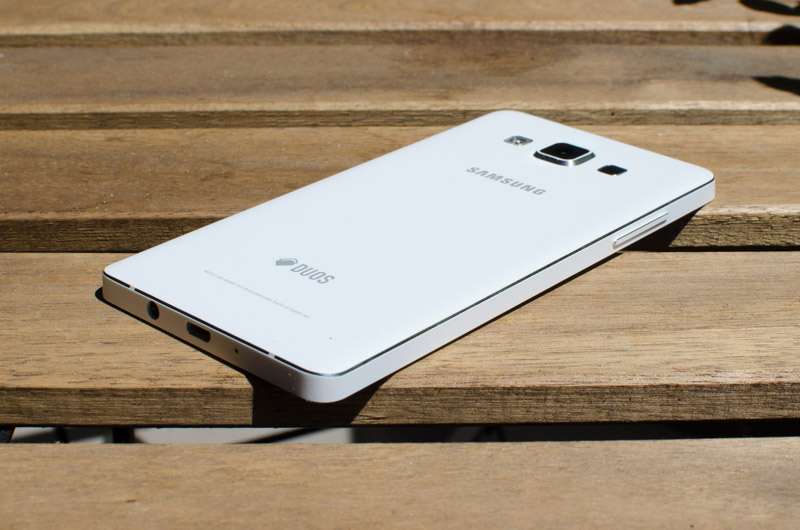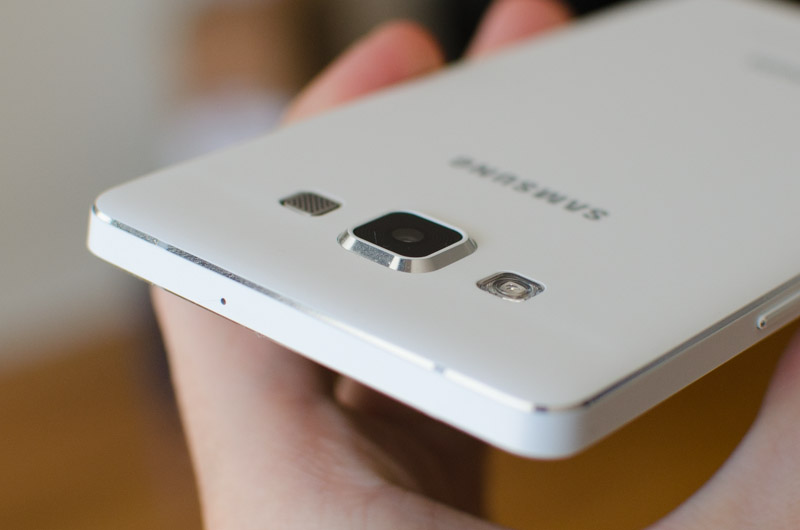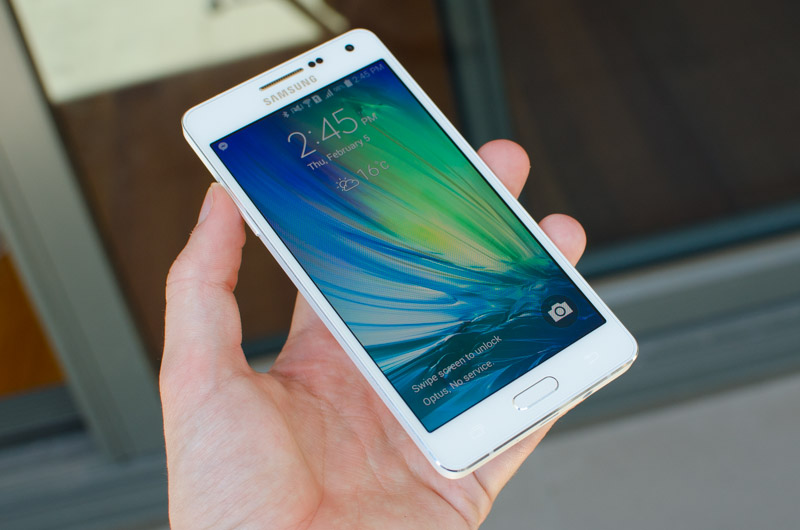Last year, Samsung announced the Galaxy Alpha, the first high-end smartphone in their range with a part-metal body. The handset was a good, yet flawed step forward for the company, failing to live up to its premium price tag from a hardware and battery life standpoint. Although the design was one of the best to come from the Korean giant to date, the Galaxy S5 was simply a better option for the price.
Rather than completely dropping the Galaxy Alpha design, Samsung reworked it for a new and much more compelling product. Instead of gunning for the high-end market, this new handset would slot into the mid-range, featuring decent specifications inside the metal body for a reduced price. Enter the Samsung Galaxy A5.
The Galaxy A5 is a $400 smartphone inside a $700 body. It features a new Qualcomm Snapdragon 410 SoC, which is a 64-bit capable dual-core new to our test bench, alongside a 5.0-inch 720p Super AMOLED display, and a 13 megapixel camera. It's not running Android 5.0 just yet, though Samsung will be providing an update shortly. And did I mention it's just 6.7mm thick?
At first glance, the Galaxy A5 is just another typical smartphone in Samsung's extensive line-up. It uses the same rounded-rectangular shape as many of their past Galaxies, and many of the same features, including a physical home button below the display and visible sensors above. On closer inspection, though, you'll find one of the nicest designs Samsung has ever produced.
Sure, the A5 is a super slim device - as svelte as the Galaxy Alpha but with a larger 2,300 mAh battery - but it's the construction that's most impressive. The metal used around the edges of the Galaxy A5, painted white to match both the front and back panel of this "Pearl White" review unit, seamlessly meet the smooth glass on the front and the pearl-like panel on the back. Unlike many of Samsung's previous handsets, the back panel cannot be removed and the battery cannot be replaced.
The material Samsung has used for the back is interesting, as it's a departure from their usual textured or cheap plastic. Instead we're getting a smooth yet satisfying piece of plastic with a metallic sheen to it, which is a surprising improvement on past material choices despite its attempts to imitate something else. Choosing to use real metal would still be a slight step up, though not necessary for this mid-range and generally well built smartphone.
As the back panel is no longer removable, the SIM and microSD card slots are now housed in removable trays found on the right hand side. One tray will hold a single micro-SIM card, and the other will hold either a microSD card or a second micro-SIM, depending on whether you want more storage in your Galaxy A5 or dual-SIM functionality. The non-Duos models, which lack Duos branding on the back panel, don't support that second SIM but will still have microSD expansion.
The right edge is also where you'll find the perfectly-positioned and clicky power button, with the volume rocker situated on the opposite side. Microphones can be found on the top and bottom edges, while the latter contains both the microUSB 2.0 charging port and the 3.5mm audio jack. If you look closely, you'll also spot several polycarbonate cuts in the metal rim so that wireless connectivity still functions adequately.
On the back, the large camera lens protrudes from the body due to the slimness of the design. Although this section does stick out by 1.1mm, a small metal rim will prevent it from getting damaged in most situations. Next to the camera lens is the LED flash, and on the other side, the main speaker. While many competitors switch to front-facing speakers, Samsung has stuck with a single driver on the rear, which is unsurprisingly mediocre in quality.
One great aspect of many devices in Samsung's portfolio is portability, and the Galaxy A5 is no exception. This mid-range handset features a respectable 5.0-inch display with a 71% screen-to-body ratio (though bezels aren't as small as I've seen). It's the thinness and lightness, though, that's most impressive: a 123 gram device just 6.7mm thin feels portable and easy to use, despite not being the most traditionally ergonomic shape to hold.
As many Android devices move to on-screen buttons, I'm feeling less sold on capacitive buttons found below displays, as often they can be harder to reach and operate. This can be a concern for the app switcher button to the left of the physical home button, which for a right-hander like me is a stretch to reach. The back button on the right is in an acceptable location, though moving to on screen buttons would make all three easier to operate.
Two features most notably missing from the Galaxy A5 in comparison to the Galaxy Alpha and Samsung's other flagships are the fingerprint scanner integrated into the home button, and the heart rate monitor on the back. I found both of those inclusions to be rather gimmicky on previous devices, so in my eyes I don't miss them at all on this cheaper smartphone.










